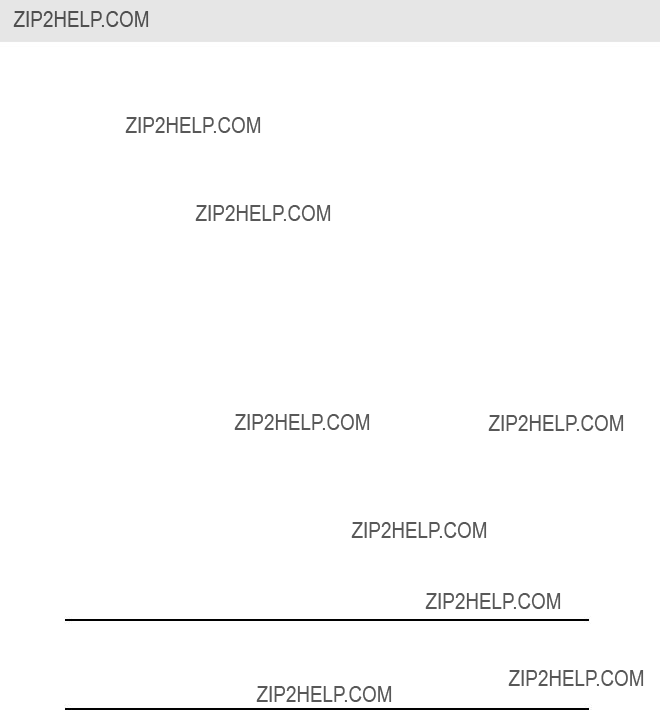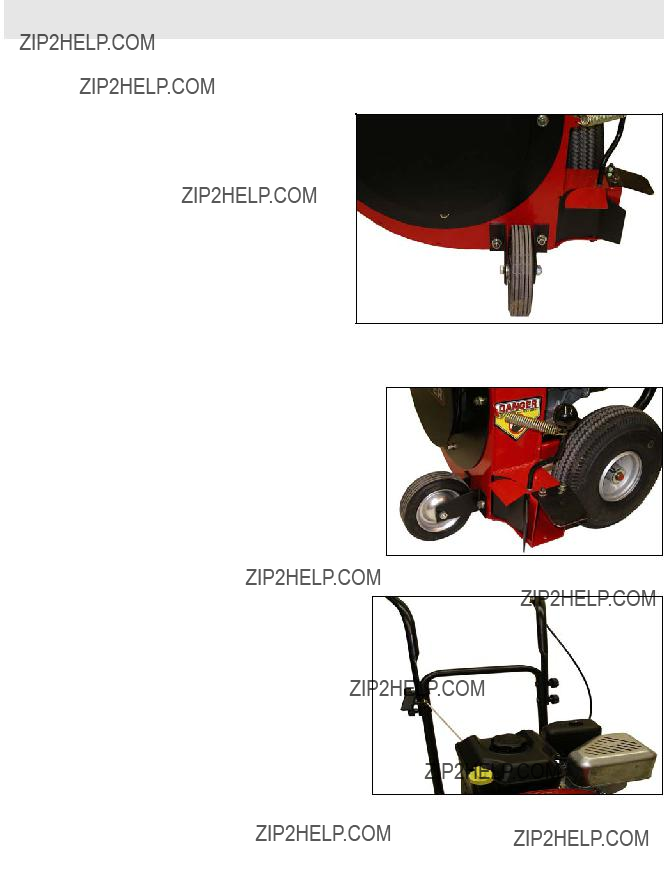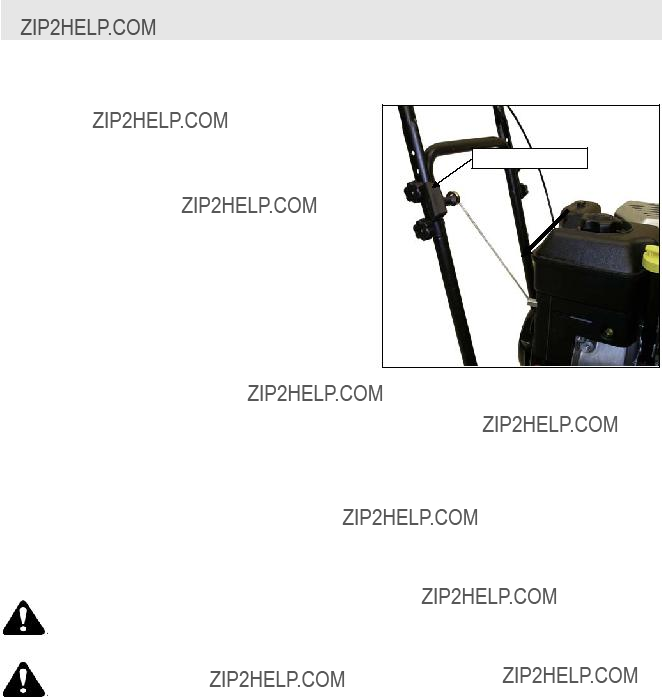
ASSEMBLY INSTRUCTIONS
OPERATOR???S MANUAL
PARTS LIST
CLASSIC
Leaf Blower
Series 1
Actual product may differ slightly from product pictured above
COPYRIGHT ?? 2004
ALL RIGHTS RESERVED
Manual No. 3071773 (I.R. 2/4/04)

ASSEMBLY INSTRUCTIONS
OPERATOR???S MANUAL
PARTS LIST
CLASSIC
Leaf Blower
Series 1
Actual product may differ slightly from product pictured above
COPYRIGHT ?? 2004
ALL RIGHTS RESERVED
Manual No. 3071773 (I.R. 2/4/04)

1 preliminaries
Congratulations!
You have just purchased one of the finest pieces of outdoor power equipment on the market today. If properly cared for, your new blower will provide years of dependable service. Please read and follow this instruction manual carefully in order to get the most out of your new equipment.
As you carefully unpack your unit, you will find the following items:
1Blower Unit
1Handle Assembly including:
1 ??? Upper Handle with foam grip
2 ??? Lower Handles
1Front Caster Wheel Kit including: 1 ??? Pair Front Caster Brackets (l&r) 1 ??? Front Caster Wheel
1 ??? Axle Bolt with lock nut
1 Package of assembly hardware
1 Package containing operating manuals and warranty registration
Each product leaves our factory in excellent condition; occasionally, however, some damage may occur during shipment. If any such damage is found upon initial inspection, immediately notify the transport carrier who delivered your machine, as they are solely responsible for such damage, as well as any subsequent adjustments necessary.
Before assembly, please take a moment and record your model number and serial number below for future reference (both numbers are located on the silver tag attached to the machine):
Model number_______________________________
Serial number________________________________
Also be sure to promptly fill out and return the warranty registration enclosed in your manual packet.
Your new blower requires very little assembly. Simply follow the instructions contained within this manual to begin enjoying the benefits of your new unit.
CALIFORNIA PROPOSITION 65 WARNING
Gasoline and Diesel engine exhaust and some of its constituents are known to the State of California to cause cancer, birth defects and other reproductive harm.
As an owner of
R0703.1

2 safety rules regarding outdoor power equipment
IMPORTANT! READ CAREFULLY THE FOLLOWING SAFETY RULES BEFORE
ASSEMBLING OR OPERATING UNIT.
TRAINING
???Read, understand, and follow all instructions in the manual and on the unit before starting. If the operator(s) or mechanic(s) can not read English it is the owner???s responsibility to explain this material to them.
???Become familiar with the safe operation of the equipment, operator controls, and safety signs.
???All operators and mechanics should be trained. The owner is responsible for training the users.
???Only allow responsible adults, who are familiar with the instructions, to operate the unit.
???Never let children or untrained people operate or service the equipment. Local regulations may restrict the age of the operator.
???The owner/user can prevent and is responsible for accidents or injuries occurring to themselves, other people or property.
PREPARATION
???Evaluate the terrain to determine what accessories and attachments are needed to properly and safely perform the job. Use only accessories and attachments approved by the manufacturer.
???Wear appropriate clothing including safety shoes, safety glasses and ear protection. Long hair, loose clothing or jewelry may get tangled in moving parts.
???Inspect the area where the equipment is to be used and remove all objects such as rocks, toys and wire, which can be thrown by the machine.
???Use extra care when handling gasoline and other fuels. They are flammable and vapors are explosive.
a) Use only an approved container.
b) Never remove fuel cap or add fuel with the engine running. Allow engine to cool before refueling. Do not smoke.
c) Never refuel or drain the machine indoors.
???Check that operator???s presence controls, safety switches and shields are attached and functioning properly. Do not operate unless they are functioning properly.
OPERATION
??? Never run an engine in an enclosed area.
???Operate only in the daylight or with good artificial light, keeping away from holes and hidden hazards.
???Be sure of your footing while using pedestrian controlled equipment, especially when backing up. Walk, don???t run.
???Do not operate in reverse unless absolutely necessary. Always look down and behind before and while traveling in reverse.
???Be aware of the blower discharge direction and do not point it at anyone. Do not operate the blower without deflectors in place.
???Never leave a running unit unattended. Always stop engine before leaving unit.
???Never operate with guards not securely in place. Be sure all safety features are attached, adjusted properly and functioning properly.
???Never operate with the discharge deflectors removed or altered.
???Do not change the engine governor setting or over speed the engine.
???Stop on level ground, shut off engine before leaving the operator???s position for any reason.
???Stop equipment and inspect impeller blades after striking objects or abnormal vibration occurs. Make necessary repairs before resuming operations.
???Keep hands and feet away intake and discharge areas.
???Keep pets and bystanders away.
???Do not operate the unit while under the influence of alcohol or drugs.
???Use caution when crossing roads and sidewalks. Stop engine if not blowing.
???Use care when loading or unloading the machine into a trailer or truck.
???Use care when approaching blind corners, shrubs, trees or other objects that may obscure vision.
SLOPE OPERATION
Slopes are a major factor related to
Do
???Blow across the face of slopes; never up and down.
???Remove obstacles such as rocks, tree limbs, etc.

2 safety rules regarding outdoor power equipment (cont.)
???Watch for holes, ruts, or bumps. Uneven terrain could overturn the unit. Tall grass can hide obstacles.
???Keep all movement on the slopes slow and gradual. Do not make sudden changes in speed or direction.
Do Not
???Do not start or stop on a slope. If tires lose traction, proceed slowly straight down the slope.
???Do not turn on slopes unless necessary, and then, turn slowly and gradually downhill, if possible.
???Do not use near
???Do not operate on slopes with wet grass. Reduced footing or traction could cause sliding.
???Do not use on excessively steep slopes.
CHILDREN
Tragic accidents can occur if the operator is not alert to the presence of children. Children are often attracted to the unit and its activity. Never assume that children will remain where you last saw them.
???Keep children out of the blowing area and under the watchful care of another responsible adult.
???Be alert and turn unit off if children enter the area.
???Before and during reverse operation, look behind and down for small children.
???Never allow children to operate the unit.
???Use extra care when approaching blind corners, shrubs, trees, or other objects that may obscure vision.
EMISSIONS
???Engine exhaust from this product contains chemicals known, in certain quantities, to cause cancer, birth defects, or other reproductive harm.
???Look for the relevant Emissions Durability Period and Air Index information on the engine emissions label.
MAINTENANCE AND STORAGE
??? Always observe safe refueling and fuel handling practices when refueling the unit after transportation or storage.
???Always follow the engine manual instructions for storage preparations before storing the unit for both short and long term periods.
???Always follow the engine manual instructions for proper
???Never store the machine or fuel container inside where there is an open flame, such as in a water heater. Allow unit to cool before storing.
???Shut off fuel while storing or transporting. Do not store fuel near flames or drain indoors.
???Keep all hardware, especially impeller bolt, tight and keep all parts in good working condition. Replace all worn or damaged decals.
???Never tamper with safety devices. Check their proper operation regularly.
???Clean leaves and debris from mufflers and engine to prevent fires. Clean up oil or fuel spillage.
???Stop and inspect the equipment if you strike an object. Repair, if necessary, before restarting.
???Never make adjustments or repairs with the engine running unless specified otherwise.
???Park machine on level ground. Never allow untrained personnel to service machine.
???Carefully release pressure from components with stored energy. (e.g. springs)
???Only replace impellers. Never straighten or weld them.
???Keep hands and feet away from moving parts.
???Frequently check components and replace with manufacturer???s recommended parts, when necessary.
???Use only factory authorized replacement parts when making repairs.
???Always comply with factory specifications on all settings and adjustments.
???Only authorized service locations should be utilized for major service and repair requirements.
???Never attempt to make major repairs on this unit unless you have been properly trained. Improper service procedures can result in hazardous operation, equipment damage and voiding of manufacturer???s warranty.

3 unit assembly
Note: Please refer to Parts List for correct part identification and placement.
FRONT WHEEL ASSEMBLY
???Attach left and right caster brackets to caster wheel using
???Check caster wheel for proper vertical alignment (camber), adjust as necessary, then tighten nuts.
SIDE AIR DEFLECTOR
???Attach side air deflector to top of discharge chute by aligning holes in deflector with threaded studs in top of chute snout. Fasten with two
HANDLE ASSEMBLY
???The upper handles are shipped in the folded storage position. To unfold, loosen two handle knobs and rotate up to the operating position. The upper handles are secured with four knobs. Insert two
Assembly complete. Your unit is now ready to be started and checked for proper operation. Some minor final adjustments may be required; see the Maintenance portion of this manual.
1

4 unit operation
STARTING THE ENGINE
IMPORTANT NOTE: The procedures outlined within this section are general guidelines, and are in no way meant to replace or supercede engine manufacturer???s operating instructions. In order to obtain optimum performance from your engine, refer to your engine manual.
WARNING! IMPELLER IS MOUNTED DIRECTLY TO ENGINE SHAFT ???
STARTING ENGINE WILL RESULT IN IMMEDIATE
DISCHARGE. TO AVOID INJURY OR DAMAGE, BE SURE DISCHARGE IS
POINTED AWAY FROM PEOPLE, PETS AND PROPERTY WHEN STARTING.
BEFORE STARTING ENGINE:
???Be sure that the unit is completely assembled, all fasteners are tightened securely, and all safety guards and components are in place.
???Be sure to check engine???s oil and fuel levels* and add as needed. (See engine manual for recommended oil and gasoline specifications.) Never check the engine while it is running or while you are smoking. Check only when engine is cold.
All machines are shipped without oil or fuel unless otherwise noted.
???Be sure that fuel valve is set to open position.
OPEN
CLOSED
TO START ENGINE:
???Move choke control located on engine to the closed ???ON??? position.
???Move engine speed control, located on the handle, to the fast ???Rabbit??? position.
CHOKED
ENGINE
SPEED
CONTROL

4 unit operation (cont.)
STARTING THE ENGINE (cont.)
???Bracing unit with one hand on the upper handle and a foot on the right rear tire, firmly grasp recoil handle and pull briskly. You may have to pull several times before engine starts. (If engine fails to start within a reasonable amount of time, discontinue and check engine manual for further instructions.) Note: Do not allow recoil rope to snap back into recoil; damage to the rope or recoil could result.
???After engine starts, move engine speed control to approximately half and return choke control to open ???OFF??? position.
RECOIL HANDLE
PULL
BRISKLY
TO SHUT ENGINE DOWN:
???Move engine speed control to slow ???Turtle??? position.
???Allow engine to idle for
???Move engine speed control to ???STOP??? position. Turn fuel valve to closed position.
IMPORTANT NOTE: If you experience problems with your engine that cannot be satisfactorily resolved by following the instructions contained within the engine manual, contact your local engine dealer, or call the
BLOWER OPERATION
DANGER! DO NOT PASS BY OR STAND ON THE AIR DISCHARGE SIDE OF ANY
LEAF BLOWER WITH THE ENGINE RUNNING. HIGH VELOCITY DISCHARGE CAN
EASILY TURN HARMLESS DEBRIS INTO FLYING PROJECTILES.
DANGER! NEVER INSERT ANY BODY PART OR FOREIGN OBJECT INTO ANY
OPENING WHILE UNIT IS RUNNING. SERIOUS INJURY OR DEATH CAN RESULT.

4 unit operation (cont.)
GENERAL RULES TO OBSERVE BEFORE
AND DURING OPERATION:
???Inspect your unit before each and every use. Check for worn, bent or broken components, loose fasteners, low or flat tires, etc., and repair or replace prior to operation. DO NOT OPERATE A MACHINE THAT IS WORN OR
DAMAGED ??? SERIOUS INJURY OR DEATH CAN RESULT.
???Clear the entire work area of all debris that could cause damage to or become entangled in the unit. Rocks and large branches can wedge themselves between the impeller and housing, causing equipment damage or personal injury. If in doubt, remove it.
???Do not start unit until you are ready to begin blowing, and promptly shut off unit as soon as operation is complete.
???Keep hands, feet and clothing away from rotating parts. Never place your feet or hands in path of discharge.
???Use proper discretion in selecting your debris removal pattern, especially on uneven terrain. Avoid steep hills, especially if surface is wet. Do not travel straight down slopes exceeding 14 degrees. If tires begin to slip when climbing a slope, the grade is too steep for safe operation. Angle the unit to a less steep slope until tires stop slipping and traction is regained.
???Be keenly aware of your surroundings while operating unit ??? children and pets can pop out of nowhere.
???Learn to listen to your machine ??? being aware of what a
TO CHANGE AIR DISCHARGE DIRECTION:
???To direct air discharge out from the front of the machine, open the forward air deflector door, mounted on the front of the discharge end of the blower, by pushing the control lever to the front of the machine. This feature is ideal for such things as blowing debris from a wall or fence. Adjust engine speed to increase or decrease air discharge rate.
???To direct air discharge out from the side of the machine, close the forward air deflector door by pulling the control lever toward the back of the machine. This feature is ideal for such things as blowing debris into neat rows. Adjust engine speed to increase or decrease air discharge rate.
FRONT
SIDE
HINTS FOR EFFECTIVE OPERATION:
???For operator ease and maneuverability, push down on the upper handle while walking so that the machine balances on the rear wheels.
???When blowing dry debris, set blower discharge to lower rate; when blowing wet or frozen debris, increase discharge rate.

5 maintenance
BEFORE MAKING ANY ADJUSTMENTS, STOP ENGINE AND DISCONNECT SPARK
PLUG WIRE TO PREVENT INADVERTENT STARTING OF UNIT.
GENERAL:
???Follow implicitly the engine manufacturer???s recommendations for maintenance.
???Always keep your machine clean ??? especially the engine. Check all adjustments periodically. Also, periodically check that all fasteners are secure.
???Never make any adjustments to the unit until the engine is off and the spark plug wire is disconnected.
???If carburetor adjustment is necessary, stand to one side and keep feet and hands in the clear while making adjustments.
???Keep engine free of accumulations of grass, leaves or excessive grease. An accumulation of these combustible materials may result in a fire.
???Store gasoline in a safe and approved container in a cool, dry place.
???Keep the unit and any fuel containers in locked storage to prevent children from playing and/or tampering with them.
???Do not store gasoline powered equipment or fuel containers in a basement or any closed area where heating or heat appliances or open pilot lights are present, unless the fuel is completely drained from the power equipment and the fuel containers.
LUBRICATION:
???The pneumatic tires on your blower contain bearings that should be lubricated on a weekly basis using a

5 maintenance (cont.)
BEFORE MAKING ANY ADJUSTMENTS, STOP ENGINE AND DISCONNECT SPARK
PLUG WIRE TO PREVENT INADVERTENT STARTING OF UNIT.
TROUBLESHOOTING:
???UNIT WILL NOT START:
???Check fuel and oil levels.
???Check to make sure choke is set when engine is cold, off when hot.
???Check throttle for proper operation.
???Check intake baffle for jammed debris or accumulation of debris.
???If condition persists, contact dealer.
???UNIT STALLS:
???Check fuel and oil levels.
???Check intake baffle for jammed debris or accumulation of debris.
???If condition persists, contact dealer.
???EXCESSIVE NOISE OR VIBRATION:
???Check to make sure all fasteners are tightened securely.
???Remove intake baffle and visually inspect impeller for broken, bent, or cracked blades; also make sure impeller hub is securely tightened onto engine shaft ??? bolt should be torqued to 15 ft/lbs. Pull recoil and check for bent engine shaft. Contact dealer for repair or replacement if necessary. Do not attempt to repair a damaged impeller or bent engine shaft. Serious injury or equipment damage may result.
BEFORE REMOVING INTAKE BAFFLE, OR ANY OTHER COMPONENT, STOP ENGINE AND
DISCONNECT SPARK PLUG WIRE TO PREVENT INADVERTENT STARTING OF UNIT.
???UNIT DOES NOT TRAVEL STRAIGHT:
???Check tire pressure ??? 24 psi rear. Adjust as needed.
???Check camber on front wheel, adjust as needed.
???Make sure wheels are lubricated ??? see Lubrication.

6 illustrated parts list

6 illustrated parts list (cont???d)

6 illustrated parts list
NOTES
__________________________________________________________________________
__________________________________________________________________________
__________________________________________________________________________
__________________________________________________________________________
__________________________________________________________________________
__________________________________________________________________________
__________________________________________________________________________
__________________________________________________________________________
__________________________________________________________________________
__________________________________________________________________________
__________________________________________________________________________
__________________________________________________________________________
__________________________________________________________________________
__________________________________________________________________________
__________________________________________________________________________
__________________________________________________________________________
__________________________________________________________________________
__________________________________________________________________________
__________________________________________________________________________
__________________________________________________________________________
__________________________________________________________________________
__________________________________________________________________________
__________________________________________________________________________
__________________________________________________________________________
__________________________________________________________________________
__________________________________________________________________________
__________________________________________________________________________
__________________________________________________________________________
__________________________________________________________________________
__________________________________________________________________________
__________________________________________________________________________
__________________________________________________________________________
__________________________________________________________________________
__________________________________________________________________________
__________________________________________________________________________
__________________________________________________________________________
__________________________________________________________________________
__________________________________________________________________________
NOTES
__________________________________________________________________________
__________________________________________________________________________
__________________________________________________________________________
__________________________________________________________________________
__________________________________________________________________________
__________________________________________________________________________
__________________________________________________________________________
__________________________________________________________________________
__________________________________________________________________________
__________________________________________________________________________
__________________________________________________________________________
__________________________________________________________________________
__________________________________________________________________________
__________________________________________________________________________
__________________________________________________________________________
__________________________________________________________________________
__________________________________________________________________________
__________________________________________________________________________
__________________________________________________________________________
__________________________________________________________________________
__________________________________________________________________________
__________________________________________________________________________
__________________________________________________________________________
__________________________________________________________________________
__________________________________________________________________________
__________________________________________________________________________
__________________________________________________________________________
__________________________________________________________________________
__________________________________________________________________________
__________________________________________________________________________
__________________________________________________________________________
__________________________________________________________________________
__________________________________________________________________________
__________________________________________________________________________
__________________________________________________________________________
__________________________________________________________________________
__________________________________________________________________________
__________________________________________________________________________

CLASSIC
Leaf Blower
Series 1